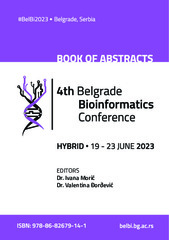Приказ основних података о документу
Two contrasting late embryogenesis abounded protein family groups of Ramonda serbica Panc.
| dc.creator | Pantelic, Ana | |
| dc.creator | Stevanovic, Strahinja | |
| dc.creator | Milić Komić, Sonja | |
| dc.creator | Kilibarda, Nataša | |
| dc.creator | Vidović, Marija | |
| dc.date.accessioned | 2023-12-19T18:52:25Z | |
| dc.date.available | 2023-12-19T18:52:25Z | |
| dc.date.issued | 2023 | |
| dc.identifier.isbn | 978-86-82679-14-1 | |
| dc.identifier.uri | http://rimsi.imsi.bg.ac.rs/handle/123456789/3087 | |
| dc.description.abstract | Ramonda serbica Panc. is an ancient resurrection plant, that survives a long desiccation period and fully recovers metabolic functions upon watering. The main characteristic of desiccationtolerant plant species is their ability to accumulate protective late embryogenesis abounded protein (LEAPs). To propose their role in R. serbica desiccation tolerance we structurally analysed LEAPs in hydrated and desiccated leaves. According to transcriptomics, 318 LEAPs were identified and classified into seven family groups based on protein BLAST analysis and conserved motifs (Pfam). The largest LEAPs belonged to the LEA2 and LEA4 protein family groups. We employed online tools to analyse physicochemical characteristics (Expasy, ProtParam, BioPython, GRAVY calculator), disorder propensity, and characterization protein structures (FELLS, JPred, SOPMA, PsiPred, Phyre2, Espritz-DisProt, Espritz-X, Iupred, TMHMM, +Heliquest). The most abundant, atypical LEA2 group containing 127, mostly hydrophobic proteins, was divided into five subgroups. Members of this group were predicted to fold into globular domains, β-barrel at the C-terminus, followed by transmembrane hydrophobic-helices and disordered N-terminal regions. Results indicated the possible involvement in the protection of the chloroplastic membranes. The LEA4 group exhibited an exceptionally high tendency to form amphipathic α-helices and simultaneously had a high disorder propensity. This group is made of 96 proteins, classified into 3 subgroups. The high content of polar and charged amino acids (lysine, glutamate, and aspartate) is characteristic of this group. Motifs corresponding to the R. serbica LEA4 protein family group folded into A-type α-helices that contained positive, negative, and hydrophobic surfaces. Based on previous knowledge, the possible functions of the LEA2 and LEA4 groups are discussed with significant implications on cell preservation technology and the improvement of crop drought tolerance. | sr |
| dc.language.iso | en | sr |
| dc.publisher | Belgrade : Institute of molecular genetics and genetic engineering | sr |
| dc.relation | info:eu-repo/grantAgreement/MESTD/inst-2020/200042/RS// | sr |
| dc.relation | info:eu-repo/grantAgreement/ScienceFundRS/Promis/6039663/RS// | sr |
| dc.rights | openAccess | sr |
| dc.rights.uri | https://creativecommons.org/licenses/by/4.0/ | |
| dc.source | 4th Belgrade Bioinformatics Conference, 2023, 4, 68-68 | sr |
| dc.subject | LEA proteins | sr |
| dc.subject | secondary structure prediction | sr |
| dc.subject | IDPs | sr |
| dc.subject | resurrection plants | sr |
| dc.title | Two contrasting late embryogenesis abounded protein family groups of Ramonda serbica Panc. | sr |
| dc.type | conferenceObject | sr |
| dc.rights.license | BY | sr |
| dc.citation.spage | 68 | |
| dc.identifier.fulltext | http://rimsi.imsi.bg.ac.rs/bitstream/id/8084/bitstream_8084.pdf | |
| dc.identifier.rcub | https://hdl.handle.net/21.15107/rcub_rimsi_3087 | |
| dc.type.version | publishedVersion | sr |

